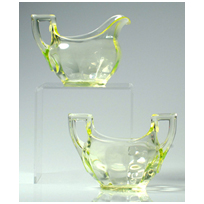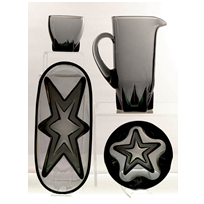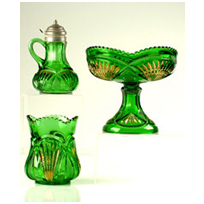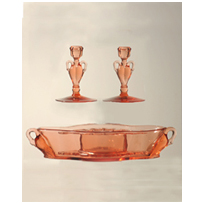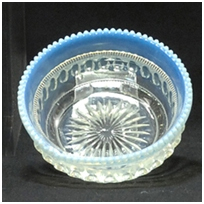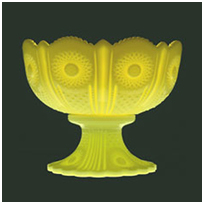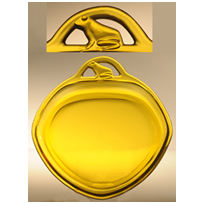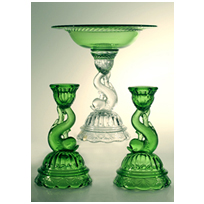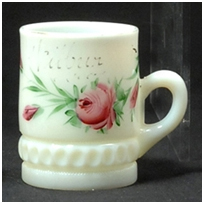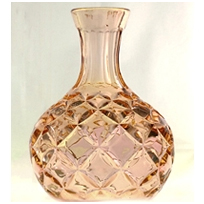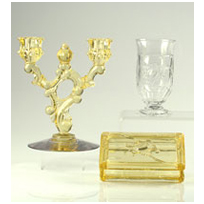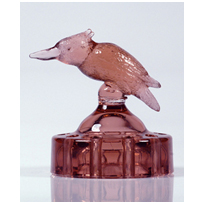 |
Hawthorne
Hawthorne was first introduced in 1926. This color is found in several shades, from lightest lavender to a brownish, muddy purple. Because of the inconsistency in the color Heisey ceased production in 1927 giving Hawthorne an extremely short period of production.Hawthorne is found in these stem lines: #3324 Delaware, #3359 Plateau, #3360 Penn Charter, #3362 Charter Oak, and #3366 Trojan. Pressed-ware pieces from #1229 Octagon, #1231 Ribbed Octagon, #1184 Yeoman, #411-412 Tudor, #406-407 Coarse Rib, and #417 Double Rib & Panel can be collected. Assorted creams, sugars, nut cups, vases, pitchers, candlesticks, plates, floral bowls, frogs, and other accessory pieces were produced in limited supply in the Hawthorne color. |



